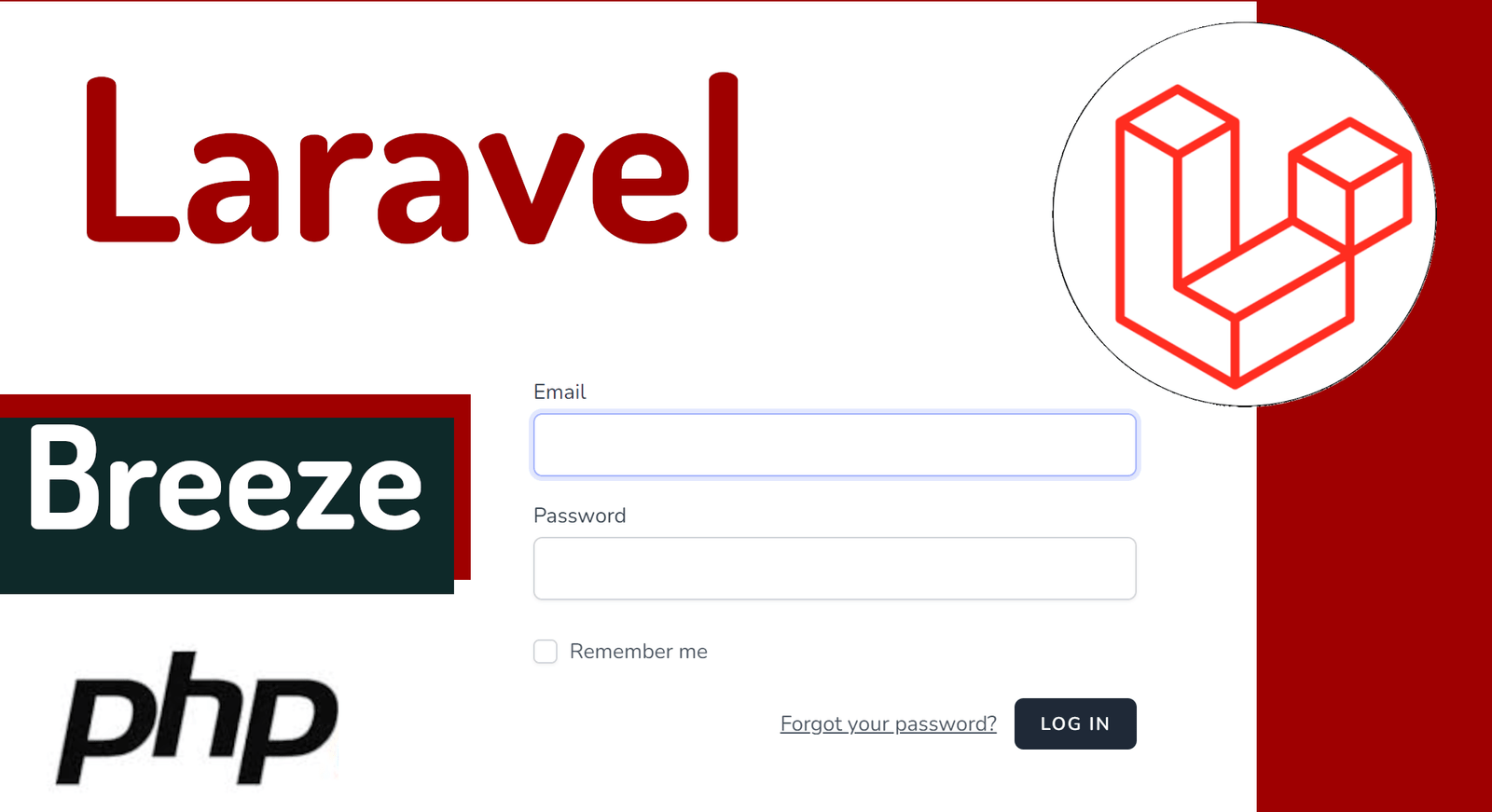Getting started with Laravel Breeze - Simple authentication system
Content Index
Laravel Breeze define it in the official documentation as:
"Laravel Breeze is a minimal and simple implementation of all of Laravel’s authentication features, including login, registration, password reset, email verification, and password confirmation. Laravel’s default view layer Breeze is made up of simple Blade views designed with Tailwind CSS.”
And in a few words, it offers us two configurations at the project level:
- Install and configure Tailwind.css and Alpine.js.
- Install and configure a simple authentication scheme, login, password recovery and middleware for access control.
It is important to note that it is not the objective of the book to learn Tailwind.css or Alpine.js, therefore, it is assumed that the reader has some knowledge about them; we will try to use these technologies in a simple way, but if you get lost at some point, as a general recommendation, you can pause the chapter and study these technologies a bit; on my YouTube channel you will find introductions to these technologies.
Laravel Breeze is a basic authentication package that can be installed using Composer. It's a package developed exclusively for Laravel that allows you to easily add authentication functionality to a Laravel application. Breeze uses Blade, Vue, or React templates to generate each of the visual screens and, of course, the corresponding controllers to process the requests.
Upon installation, Breeze automatically includes modules for password recovery, email verification, login, and registration, among others.
Breeze includes a profile page for updating basic information of the authenticated user. With a few modifications, you can add a simple role system to the user module; this is a configuration we cover in the complete Laravel course and book.
The page of the package that we are going to install is at:
https://laravel.com/docs/master/starter-kits
To be able to install it:
$ composer require laravel/breeze --devAnd we run:
$ php artisan breeze:installIt will ask which stack we want to use; if you have experience you can select any of the technologies like vue or react:
Which Breeze stack would you like to install?
Blade with Alpine ........................................ blade
Livewire (Volt Class API) with Alpine ........................... livewire
Livewire (Volt Functional API) with Alpine .................................... livewire-functional
React with Inertia ......................................... react
Vue with Inertia ................................................. vue
API only .................................................. api But, if you don't have experience, i recommended that you use the "blade" option:
$ bladeYou can enable dark mode:
Would you like to install dark mode support?
(yes/no) [no]
Indicating "yes":
$ yes
Among other options, such as unit tests, that would not be necessary:
Would you prefer Pest tests instead of PHPUnit?
(yes/no) [no]Indicating "no":
$ noAnd you wait until the process is finished:
INFO Installing and building Node dependencies.
If you see an error like the following:
failed to load config from C:\laragon\www\testlara11\vite.config.js
error when starting dev server:
Error: Cannot find module 'node:path'
Require stack:
- C:\laragon\www\testlara11\node_modules\vite\dist\node-cjs\publicUtils.cjs
- C:\laragon\www\testlara11\node_modules\vite\index.cjs
- C:\laragon\www\testlara11\vite.config.jsIt means that you have a very old version of Node; you can know your version of Node with:
$ node -vIf you see a version similar to or lower than this:
v14.16.1In the book, we are using:
$ node -v
v18.8.0You must update your version; then you can run:
$ npm run devIn the case of using Laravel Sail and not having Node installed on your computer:
$ ./vendor/bin/sail npm run devFinally, we will see that our route scheme is overwritten in:
Route::get('/dashboard', function () {
return view('dashboard');
})->middleware(['auth', 'verified'])->name('dashboard');
And remember to put the overwritten routes back:
use App\Http\Controllers\Dashboard\CategoryController;
use App\Http\Controllers\Dashboard\PostController;
***
Route::group(['prefix' => 'dashboard'], function () {
Route::resources([
'post' => PostController::class,
'category' => CategoryController::class,
]);
});If we review the generated files in the resources folder, we will see:
resources\css\app.css
@import 'tailwindcss/base';
@import 'tailwindcss/components';
@import 'tailwindcss/utilities';
resources\js\app.js
import './bootstrap';
import Alpine from 'alpinejs';
window.Alpine = Alpine;
Alpine.start();Breeze configured Tailwind.css and Alpine.js in our project with the corresponding imports for that purpose.
Finally, the npm run dev command generates the output files and launches a Hot Reload Replacement process that allows us to synchronize the changes we make in the source code with what we are seeing in the browser.
Authentication system
Apart from the Tailwind and Alpine configuration, Laravel Breeze configures a simple authentication scheme that we are going to use next.
If we go to:
http://larafirststeps.test/login
We will see the following screen:
A login page, but we need to create a user:
http://larafirststeps.test/register
Let’s create some:
And if we go to the database:
By default we already start login; and as you can see, we already have a nice layout ready for our application; in the project:
You will see some view files that Laravel Breeze already generated for us:
I recommend that you give it a good review, and you will see all the options we have; register, login, recover password and close session:
I agree to receive announcements of interest about this Blog.
Laravel Breeze is a minimal and simple implementation of all Laravel authentication features. We will learn how to set up a Laravel project with Laravel Breeze to create a simple authentication system and configure Tailwind.css and Alpine.js

